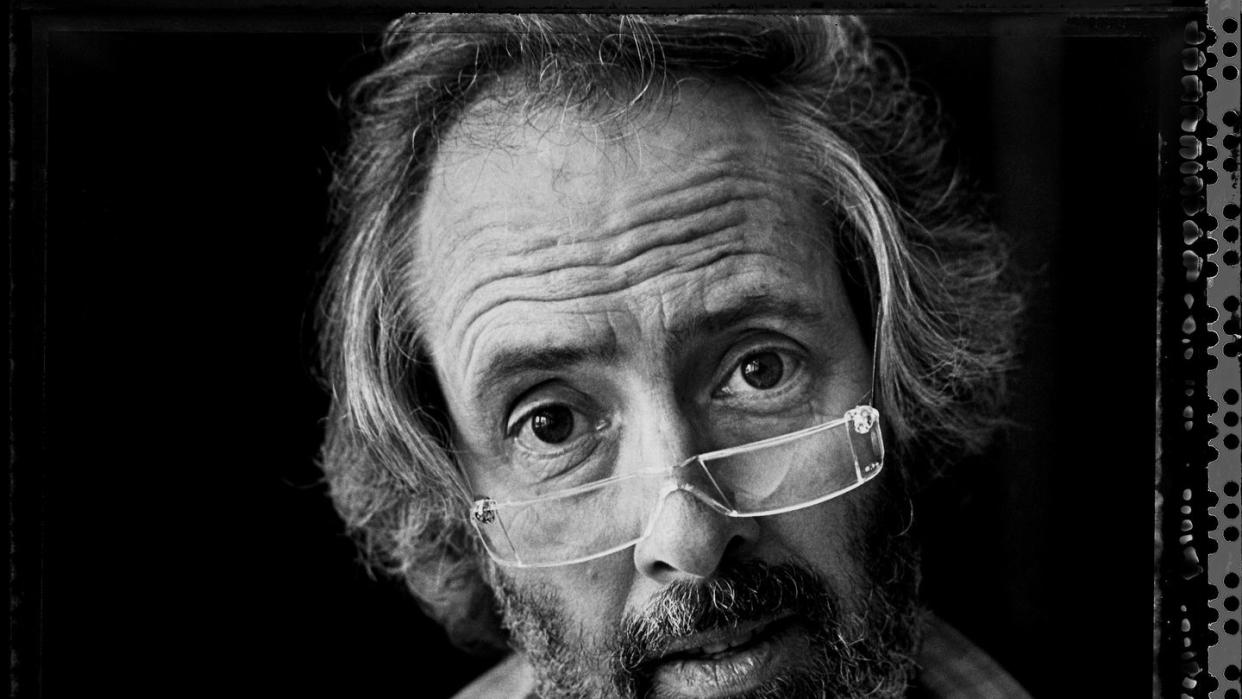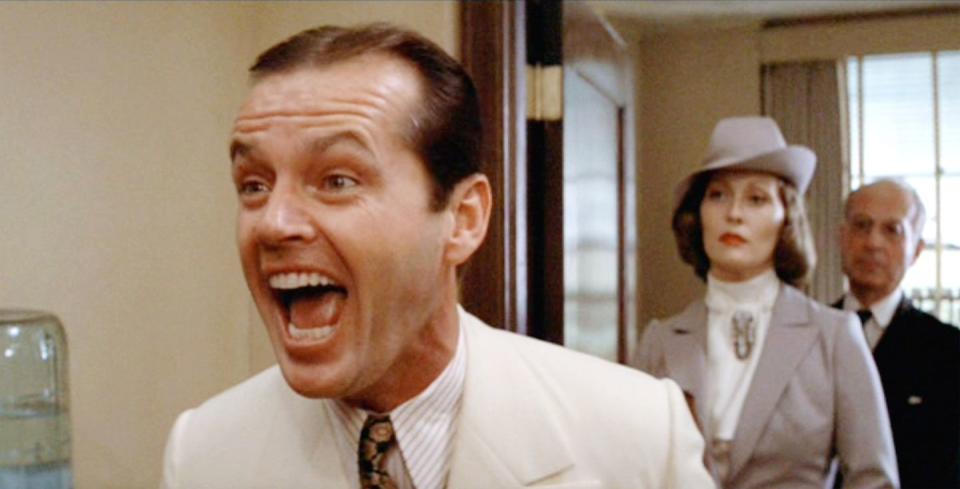Read Robert Towne’s 1991 Essay About Screenwriting

This article originally appeared in the July 1991 issue of Esquire. To read every Esquire story ever published, upgrade to All Access.
Several years ago my five-year-old daughter bounced into my study and found me hunched and miserable over my typewriter, feeling like a housewife who couldn’t get her stove to boil water. Kate wanted to know why I wouldn’t play with her. “Because I’m stuck.” She wanted to know why I was stuck. “Because it’s hard.” She thought about this for a minute and said, “Then why do it, Dad? Why don’t you cease this activity and become an artist?”
By artist she meant painter, of course, but despite its surprising diction, her question was not an unfamiliar one. It was, in fact, a question I’d heard posed all my life, and not just to me. Writers in every generation since screenplays went off the cuff of the director and onto paper have been asked to respond to it. Generally they have done so with wit, shame, and cynicism—the wisdom of wags and writers from Anita Loos and Ben Hecht to Fitzgerald and Parker has been distilled and codified into Woody Allen’s phrase about screenwriting: Take the money and run. Write the great American novel, the Pulitzer Prize-winning play, live well, and don’t take screenwriting too seriously. Like parking-lot attendants and waiters in Los Angeles, do it on the way to being an actor or a grown-up or an artist, do it as a means to an end—but never as an end in itself. This is a continuing attitude about screenwriting. As Vincent Canby observed not long ago, “I can’t imagine why any person who took himself seriously as an artist would pursue it for more than five minutes.”
There is only one other thing I can recall being treated with anything like the amusement and contempt and condescension reserved for screenwriters—and that is the city of Los Angeles itself. Since I can remember, it’s been called crass, cultish, “the nowhere city,” full of vegetation and people and architecture from any- and everywhere else on earth. Some called it “southern cafeteria” because of the proliferation of eating establishments where the old and the odd and the ill would sit tray-by-tray, spooning their Waldorf salads and dreaming about the future they had come to seek. No one, I suppose, embodied the spirit of contempt and frustration and loathing about Los Angeles more dramatically than Nathanael West. In him, love and hate for Los Angeles collided and finally died in a head-on traffic accident at Sunset and Sepulveda—or so I had been brought up to believe. (Actually, West died on the highway in El Centro, just north of Tijuana, purportedly in a hurry to make it to L.A. in time for his buddy Scott Fitzgerald’s funeral.) Whether it’s Nathanael West or David Susskind or Woody Allen, the varying skills of the observer notwithstanding, the observation is likely to be the same: The only good thing about Los Angeles is that you can turn right on red (but not always, and particularly not at Sunset and Sepulveda).
This confluence of opinion about Los Angeles and screenwriting—bogus representations of life and literature, respectively—is something I remember vividly about growing up in that city. The Santa Anas brought hot air from the desert, ocean breezes brought cold air from the Pacific, and the prevailing wind from the east brought the same message over and over: I lived in a world that was, if possible, phonier than the movies it produced.
Even as a child—especially as a child—this name-calling bothered me. I knew that the fishermen I would watch going out to sea in San Pedro were not phony. Their beards would scratch your face, there was red wine on their breath, and they made you feel safe when they lifted you off the boat and onto the docks before they cast off into the open sea. They were very real.
At the same time, certain things in the movies I watched while growing up began to strike me as increasingly unreal. For instance: I’d never been to New York, but I found it unlikely that you could pull up in front of the Waldorf-Astoria at any hour of the day or night and find a parking space; I would get faintly indignant that no one waited for change when they paid a check in a restaurant; I found it hard to swallow that every married couple slept in twin beds, that the husband always wore pajamas and the wife always woke up without her lipstick smeared; I knew it was a flat-out lie when the movie was set in Los Angeles and the men wore hats and overcoats. This misrepresentation of native dress was a serious violation of reality. It rankled me the way James Fenimore Cooper’s Indians rankled Mark Twain—when six of them jump out of a sapling barely six feet tall and somehow miss a barge 150 feet long passing beneath them at less than one mile an hour. Moreover, these hats in L.A. weren’t merely noted on the printed page; they were being shown on a huge screen, the offending item much larger than life. I’m sure I figured somewhere back then that sooner or later, when I grew up, I would try to do it differently. I’d make it “real.” Particularly because I grew up in a place outsiders claimed was unreal, and because I looked at representations of that world onscreen that I thought were unreal, I suppose I saw movies as a way of redressing a wrong. I would use one illusion—movies—in order to make another illusion—Los Angeles—real.
But then why not address and redress these views of Los Angeles through novels and plays? Why choose screenwriting, so often spoken of as a collaborative business? In this context, collaboration is akin to what happened in occupied France, and business means that you sell whatever writing skills you have for whatever money you can get.

I guess it’s like I said to my daughter, I really am stuck....There are no novels or plays I’m itching to write and there never have been. I love movies. I think movies best communicate whatever I have to say and show; or to put it another way, when what you want to show is what you have to say, you are pretty much stuck with movies as a way of saying it.
Consider this: In Lawrence of Arabia, Lawrence, in flowing white robes, sits on a truck in the middle of the desert giving a press conference. He’s ten feet tall on the screen and overwhelmingly immaculate. He faces a grimy-looking reporter who scratches his beard and asks snidely, “Just what is it, Colonel Lawrence, that attracts you to the desert?” Lawrence glances distastefully at the dirty reporter and offers a three-word reply: “Because it’s clean.” It is not the text but the context that gives this reply its full force. Those three words in a novel or even on the stage would be mildly amusing at best, but on the screen the effect is as overwhelming as the figure of Lawrence and the desert looming behind him. Those three words are the scene. There is no speech, long or short, about Lawrence’s need to seek remote places of the earth in order to avoid the corruption inevitably found in its more populated areas. Only a clean man, a dirty reporter, a big desert, and three little words—“Because it’s clean.”
It’s a movie. What else do you need?
You Might Also Like


